How to Calculate Shopify Shipping Rates in 2024
Learn how to master Shopify Shipping Rates with our comprehensive guide, ensuring cost-effective and customer-friendly shipping for your e-commerce...
Home > Blog > How to Use Delivery Zones with E-Commerce?
Retail and E-CommerceLearn how to use delivery zones to improve the e-commerce shipping experience with a guide to set up shipping zones with your carriers and platforms.
This is an updated guide to delivery and shipping zones in 2024.
In this in-depth guide you’ll learn:
So if you’re ready to go “all in” with delivery zones, this guide is for you.
Let’s dive right in.
Delivery zones (or shipping zones) are geographical areas to which businesses or carriers deliver products to customers. These zones of delivery share the same shipping rate and cover an area that’s based on the distance of the final destination to the point of origin.
So:
When you want to have something delivered, the address where you want that package delivered is probably part of a delivery zone.
Shipping zones are quickly becoming the de facto standard for e-commerce delivery.
In fact, that’s why most e-commerce platforms allow you to assign delivery by zone.
This includes Shopify and WooCommerce, as well as food delivery platforms like Doordash and UberEats. But also Google.
It’s also useful if you rely on a last mile carrier to ship products to customers.
In the United States, FedEx, UPS, USPS, and other major carriers all use shipping zones to determine the shipping costs.
While in Europe, popular carriers like Royal Mail and DHL view different countries or regions (UK & Ireland vs. Western Europe / EU vs. non-EU) as separate delivery zones.
By dividing the total delivery area into shipping zones, carriers and delivery businesses are able to cut costs and reduce delivery times.
So…
In this part of the article, you’ll see what factors can affect zone delivery services.
This will help you to determine the zones.
But also the price, restrictions, and options for each delivery zone.
Let’s begin.
Cost is a HUGE factor when you’re creating delivery zones.
But typically, this applies to both self-deliveries and those that use carriers:
The greater the zone, the greater the cost.
With carriers, you’ll have to determine which shipping service you want to use.
Some carriers provide flat rates for zone delivery. (Regardless of the destination)
Others will charge more based both on distance and the specific service.
Sometimes, you won’t even be able to qualify for zone delivery.
For example, USPS offers zoned delivery for these services Priority Mail, Priority Mail Express, USPS Retail Ground, and Bound Printed Matter.
You won’t qualify if you want to use their First-Class Mail, USPS Marketing Mail, Library Mail, or Media Mail services.
When it comes to self-delivery, you’ll have to review all your delivery costs.
Your biggest expense will be transportation, as it uses up almost 50% of all operational costs.
Here’s a complete breakdown of transportation costs associated with running a last-mile delivery.
You’ll have to consider other overhead costs. But also the time it takes to cover long distances, and the drivers those deliveries will hold up.
Finding a balance between cost per delivery so it suits customers and the profitability of each delivery zone is crucial.
Package weight and dimensions of your orders also affects shipping cost by zone.
Most carriers have specific demands for what size packages qualify for zone delivery.
Others require you to use the carrier’s packaging.
For example, here’s how Royal Mail’s delivery restrictions determine the size of packaging:
NOTE: Carriers generally charge a higher price the higher the zone they’ll have to ship your packages based on either the actual order weight or its calculated dimensional weight on each side of the parcel.
When it comes to your delivery, order dimensions will restrict payload capacity of delivery vehicles, as well as cost-efficiency of a specific delivery.
If packages are too large, they’ll use up too much space. So you’ll have a lower vehicle utility.
It also doesn’t make sense delivering small orders that rack up the cost of shipping.
You may want to add your own restrictions for multiple delivery zones.
Or a minimum order value.
Offering free delivery to zones closest to your point of origin seems intuitive.
Because of the lower cost per delivery, you can use free shipping to incentivize customers to raise order frequency.
Especially if they’re living close to your company (i.e. Zone 1 and 2).
But zone delivery makes fulfillment costs more predictive.
This enables e-commerce companies to provide free delivery to all zones.
However, you have to be strategic about it to ensure it doesn’t hurt your margins:
If you’re using a carrier, you can reduce the no. of zones because you have more flexibility when it comes to choosing your point of origin.
When customers are geographically distributed unevenly, outsourcing order fulfillment in large cities can help you reach more customers. And offer free shipping as an option.
A package will almost always arrive if you send it inside Zone 1 or Zone 2 than to a higher zone like Zone 7 or Zone 8. That’s because:
The greater the distance to the destination, the more time it takes to deliver it.
That’s pretty self-evident.
But slow shipping costs you customers.
In fact, 73% of e-commerce shoppers expect affordable delivery options when ordering online.
If the delivery takes too long, 24% of customers will cancel their order due to slow fulfillment.
Standard delivery still takes 3-5 business days.
And if you look at most carriers, they all use this timeframe when delivering parcels outside Zone 1.
For most consumers this is still acceptable.
But it’s critical that you raise delivery speed.
In fact, nearly one in four consumers would pay a premium for same-day delivery. (Delivery Statistics)
Still, it’s almost impossible to offer same-day shipping to the lowest zone.
To overcome this, you can:
Want to drive faster fulfillment? Read our free guide on how to raise the delivery speed of your operations.
With more locations to deliver from, you reduce the number of delivery zones.
That’s because you raise the area that your delivery covers effectively.
This means that you can:
This works both with self-delivery and using a carrier.
Here’s an example of 1 fulfillment center vs. 3 fulfillment centers:
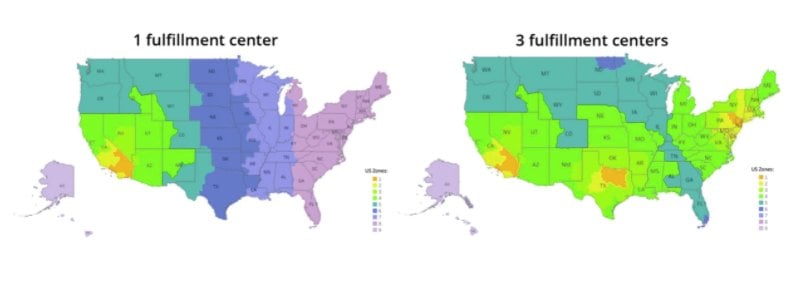
But you’ll need to make sure whether the carrier you choose can support this.
Now, let’s turn to last mile carriers.
In this part, we’ll show you how each popular 3PL provider treats delivery zones.
And what you can expect from each one.
Here we go:
Click here to see shipping zone chart for FedEx.
FedEx has 9 shipping zones in the United States.
To determine your shipping zones in the United States with FedEx, but also USPS and UPS, use this table (updated February 2022):
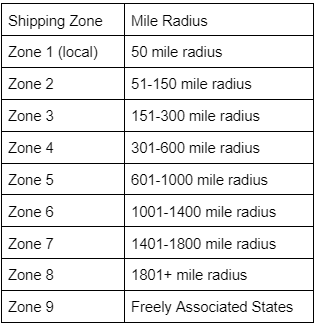
The ZIP code of the point of origin of the delivery marks Zone 1 (or local delivery).
Here’s how this might look like if you send parcels from New York City:

You can reduce the number of Zones you use if you add multiple distribution centers.
Here’s an example of three distribution centers in Dallas, New York, and Los Angeles:
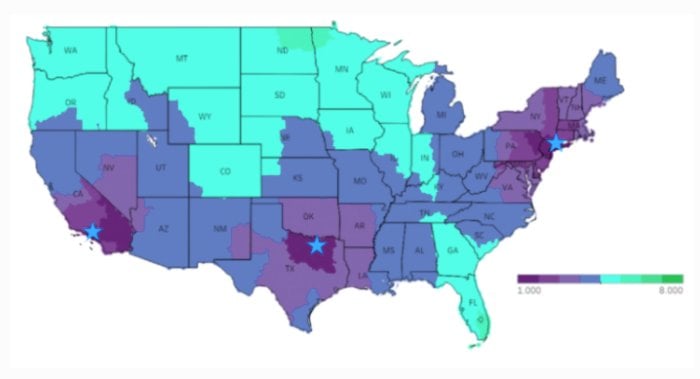
To calculate the shipping rate for FedEx, use this tool.
The tool will generate rates for specific zones based on your preferences.
Click here to see the US chart for USPS.
USPS uses the same distances as FedEx.
The cost of delivery will depend on those distances. (Inside the United States)
For example, here’s a chart that shows the cost for each Zone with USPS:

With the USPS tool, you can generate and download a chart based on your ZIP code.
(NOTE: The chart will only show you zones without pricing)
USPS also offers flat-rate shipping via Priority Mail with Flat Rate Pricing.
With this option, the cost stays the same for each package no matter the distance it travels.
Looking to use flat rate shipping services? Or offer it to your customers? Read this guide on flat rate delivery to find out how it works.
To see the chart for UPS delivery zones in the US, click this link.
All you have to do is enter the ZIP code you’re shipping to or from.
Based on this, UPS will generate a customized shipping zone chart for you.
For example, if you’re shipping from New York the zone delivery will look like this:
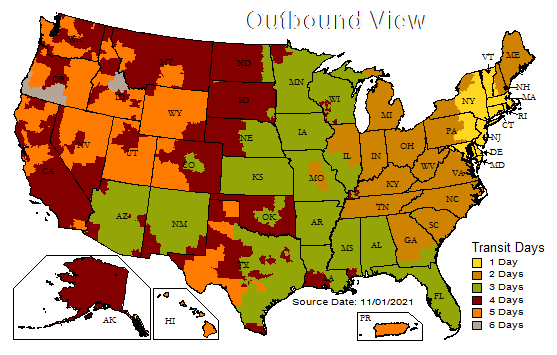
This calculates both the cost and time of delivery for each shipping zone.
For companies outside the United States, use this link.
If UPS has a service center in your area, you will be able to access a specific page for your country.
Click here to view DHL delivery zones.
Because DHL delivers all over the world, you’ll need to enter your country of origin.
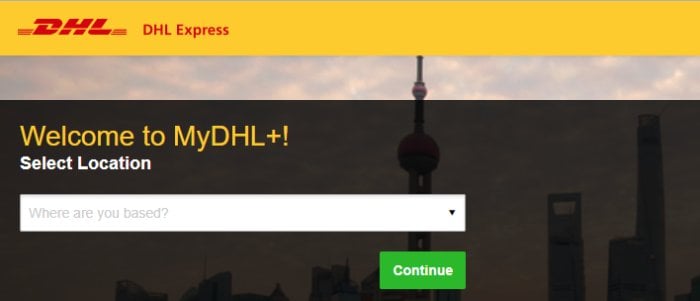
Once you’ve entered your location, you’ll see the nearest DHL Service Point Location.
DHL has fixed delivery zones for each country that determines delivery cost and time.
For example, the average delivery time in most European countries is 1-3 days.
Still, every country qualifies for DHL Express Worldwide delivery.
Royal Mail handles most of the deliveries in the United Kingdom.
The Royal Mail’s Zone 1 consists of England, Wales, Scotland, and Northern Ireland.
Outside this area different zones and rates apply.
There are four other zones for international shipping:
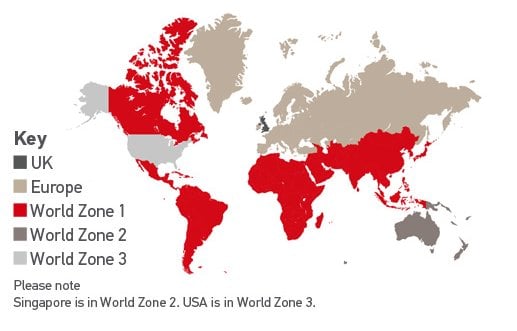
To review Royal Mail delivery zones for your country, click this link.
Royal Mail also has package weight and other restrictions.
This link will help you know how to prepare your delivery for shipping.
Planning to set up delivery zones for your e-commerce business?
The first thing you’ll need to consider is distance.
Typically, local delivery has a radius of up to 10 km (6 miles).
But if you want to deliver outside this zone, you may consider raising or lowering its area coverage, especially with urban delivery planning.
However, using a carrier or doing it by yourself isn’t the only thing you need to consider.
If you sell products online, you’ll have to set up delivery zones for your e-commerce store.
In this part of the article, we’ll show you how to do this with Google Maps.
(If you have a web store on your site)
And with Shopify and WooCommerce.
(If you’re using one of these dedicated e-commerce platforms)
So, here’s how you can create delivery zones with:
Click on the link to create a delivery area in Google Maps.
Using Google Maps at checkout is a good way to show customers whether they qualify for a specific delivery zone:
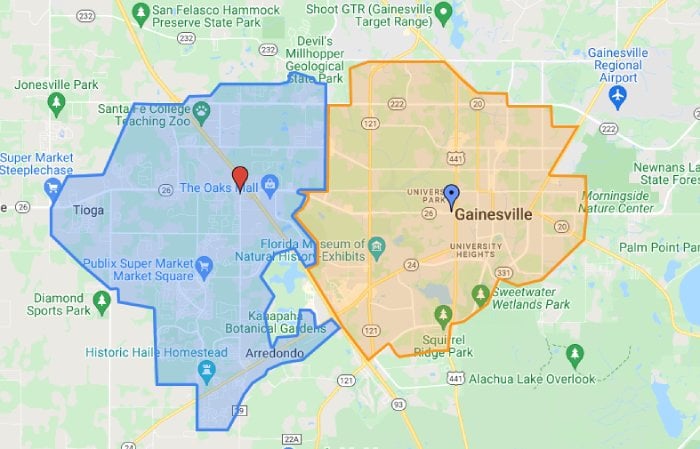
But also the extent of your total delivery area.
The process of creating a delivery zone with Google is pretty straightforward:
You can either enter the specific streets that mark up its boundaries.
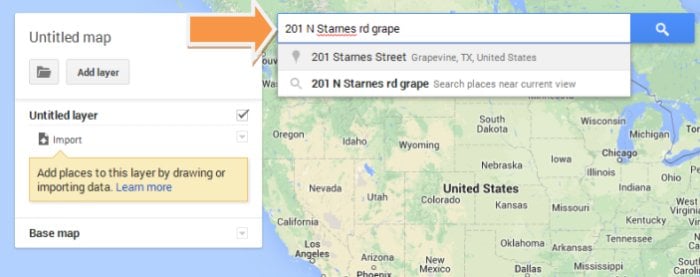
Or, you can simply draw the outlines of the delivery zone with your cursor.

You can then export the map and import it onto your website or order management system.
NOTE: You will have to sign in to your My Maps account to use this feature.
To learn how to set up a delivery zone with Shopify, go to this link.
Shopify allows you to:
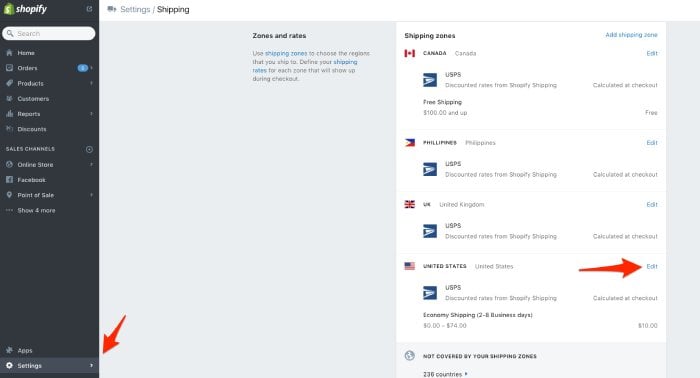
At any time, you can edit, delete, or add new shipping zones to your Shopify store.
Besides this, you can add conditional rates based on weight or price for each delivery zone.
You can also use Shopify with third-party last mile carriers.
With some of them, the platform can automatically calculate shipping rates when you connect it to your carrier account if you’re in the United States, Canada, or Australia. This includes:
But you can also add calculated rates manually.
This works both for domestic and international delivery.
Since it’s possible to create delivery zones based on a postcode or zip code via these apps.
To learn more about how to set up delivery zones on WooCommerce, visit this link.
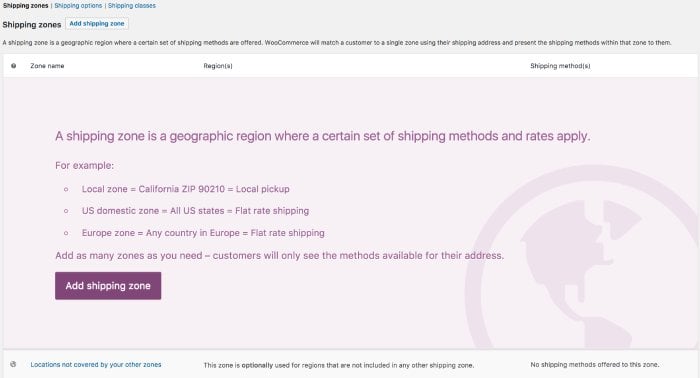
Like with Shopify, you can add multiple shipping zones and assign specific delivery methods for each zone.
For example, if you want to offer in-store pickup, flat rate shipping and free shipping for your local delivery zone.
Each zone you set up is assigned automatically to the customer when they enter their address.
You can also use WooCommerce with 3PLs and carriers by connecting your account.
Additionally, you can add local pick-up to your delivery options.
And if you want, you can also provide customers with shipping insurance.
Creating and setting up delivery zones is just the first step.
You’ll also have to plan and manage your delivery around this model.
And we can help you with that.
Learn how to master Shopify Shipping Rates with our comprehensive guide, ensuring cost-effective and customer-friendly shipping for your e-commerce...
Learn why flat rate shipping works best for e-commerce, how much it costs to ship with UPS, USPS, and FedEx, and how it lowers shipping costs.
Explore Shopify's delivery system: learn how it works, set up Shopify Shipping, handle international shipping, and resolve common delivery issues.
Be the first to know when new articles are released. eLogii has a market-leading blog and resources centre designed specifically to help business across countless distribution and field-services sub sectors worldwide to succeed with actionable content and tips.
